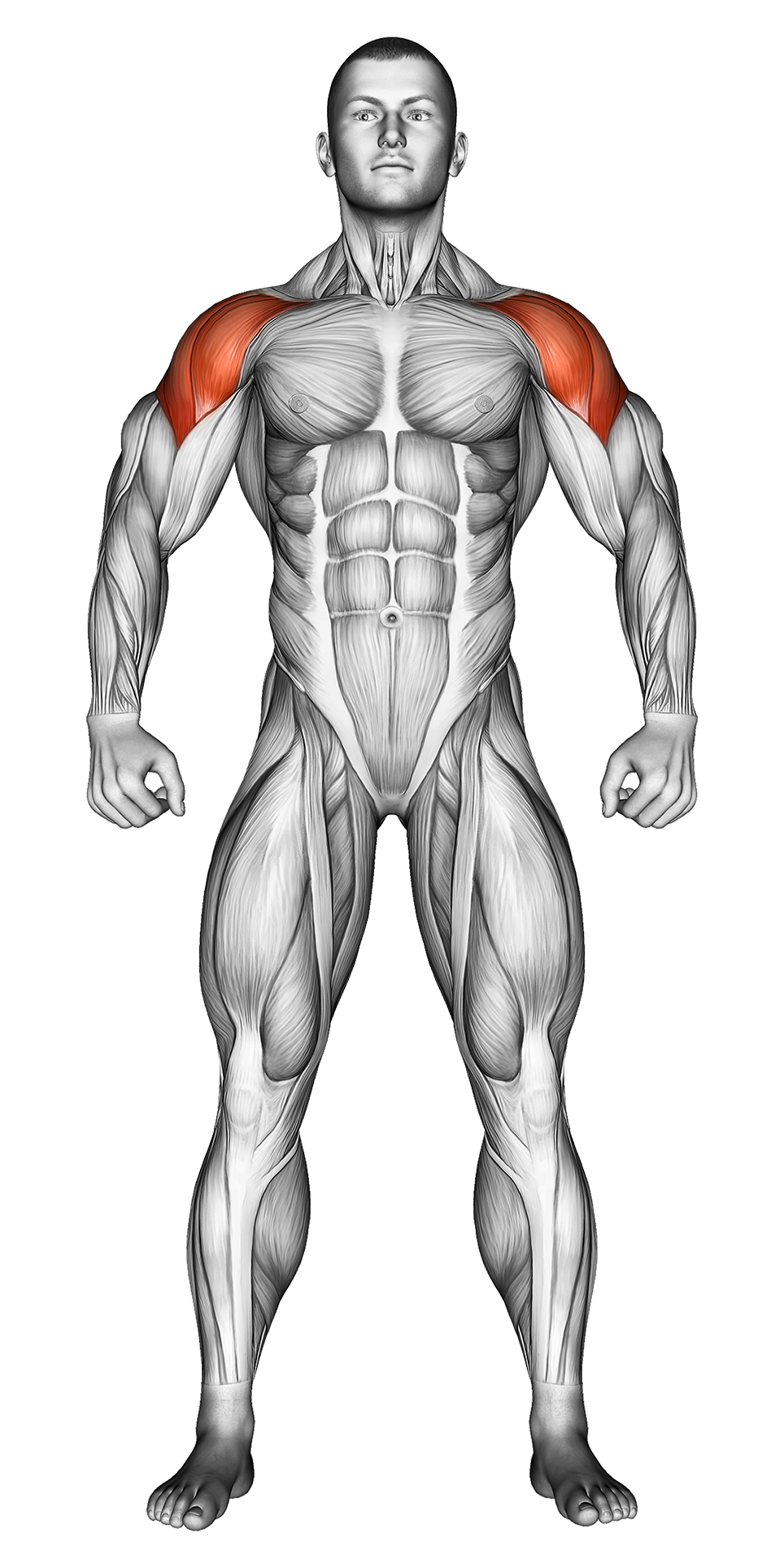Standing Dumbbell Front Raise: Video Tutorial & Exercise Guide
| Workout | Standing Dumbbell Front Raise |
| Primary Muscle Group | Shoulders |
| Secondary Muscle Group | Chest |
| Equipment Required | Dumbbell |
| Force Type | Pull |
| Mechanics | Isolation |
| Exercise Type | Strength |
| Difficulty | Beginner |
Standing Dumbbell Front Raise: Video Tutorial & Exercise Guide
Muscle Groups
- Primary Muscle Group- Secondary Muscle Group
Standing Dumbbell Front Raise - Step-by-Step Guide
Standing Dumbbell Front Raise Overview
Benefits of Standing Dumbbell Front Raise
Standing Dumbbell Front Raise Pro Tips & Advanced Techniques
Progression Plan for Standing Dumbbell Front Raise
Frequently Asked Questions (FAQs) Of Standing Dumbbell Front Raise
Secondary Muscles

Chest
How to do Standing Dumbbell Front Raise – Step-by-Step Guide
- Step 1: Stand with your feet shoulder-width apart, holding a dumbbell in each hand with your arms fully extended in front of your thighs. Your palms should be facing your thighs, and your core should be engaged.
- Step 2: Keep a slight bend in your elbows and slowly raise the dumbbells in front of you, lifting them to shoulder height. Your palms should be facing downward as you raise the dumbbells.
- Step 3: Pause briefly at the top, making sure not to swing the weights or arch your back. Focus on feeling the contraction in your front deltoids (the front of your shoulders).
- Step 4: Slowly lower the dumbbells back to the starting position, keeping control throughout the movement.
- Step 5: Repeat for the desired number of reps, maintaining proper form and control with each repetition.
Standing Dumbbell Front Raise Overview
The Standing Dumbbell Front Raise is an isolation exercise that targets the anterior deltoid (front shoulder) muscles. It’s an effective movement for building shoulder strength and enhancing the shape and definition of the upper body. This exercise can be performed with dumbbells, kettlebells, or even resistance bands, making it versatile for different fitness levels.
The front raise is commonly included in upper-body routines to develop shoulder strength and mobility, helping to improve pressing movements and posture. By keeping the movement controlled and focusing on proper form, the front raise helps minimize the risk of shoulder strain.
Benefits of Standing Dumbbell Front Raises
Standing Dumbbell Front Raises primarily target the front deltoids, helping to build strength, size, and definition in the front of the shoulders. This exercise also engages the upper chest and stabilizer muscles in the core to maintain proper posture during the movement.
Performing front raises can help improve shoulder mobility and stability, making it a useful exercise for enhancing performance in other pressing and overhead movements. It also contributes to better shoulder symmetry and overall upper body aesthetics.
The standing position requires core engagement to stabilize your body, promoting better balance and functional strength.
Standing Dumbbell Front Raises: Pro Tips & Advanced Techniques
Keep your core tight and avoid swinging the dumbbells, as this can reduce the effectiveness of the exercise and put strain on your lower back. Focus on raising the weights slowly and controlling the lowering phase to maximize tension on the front deltoids. For added intensity, try holding the top position for 1-2 seconds, or use a heavier weight while maintaining proper form. Ready to build strong, defined shoulders? Let’s raise them up!
Progression Plan for Standing Dumbbell Front Raises
| Level | Sets | Reps | Progression Tips |
|---|---|---|---|
| Beginner | 2 | 10-12 | Start with lighter weights to ensure proper form. Focus on slow, controlled movements and avoid using momentum to lift the dumbbells. |
| Intermediate | 3 | 12-15 | Increase the weight of the dumbbells as your shoulder strength improves. Focus on keeping your body upright and your core engaged throughout the movement. |
| Advanced | 4 | 15-18 | Use heavier weights and slow down the eccentric (lowering) phase to increase time under tension. For added challenge, try holding the top position for a few seconds before lowering the weights. |
Frequently Asked Questions (FAQs) of Standing Dumbbell Front Raise
What muscles do Standing Dumbbell Front Raises target?
This exercise primarily targets the anterior deltoid (front shoulder), but it also engages the upper chest and stabilizing muscles in the core.
Are Standing Dumbbell Front Raises suitable for beginners?
Yes, this exercise is suitable for beginners. Start with light dumbbells and focus on maintaining proper form and control before progressing to heavier weights.
How can I make Standing Dumbbell Front Raises more challenging?
To increase difficulty, use a heavier weight or slow down the lowering phase to increase time under tension. You can also try holding the top position for 1-2 seconds to further engage the shoulder muscles.
How often should I include Standing Dumbbell Front Raises in my routine?
Include this exercise 2-3 times per week as part of your shoulder or upper body workout. It pairs well with lateral raises and overhead presses for a complete shoulder routine.
What common mistakes should I avoid?
Avoid swinging the dumbbells or using momentum to lift them. Focus on slow, controlled movements to keep the tension on the front deltoids and prevent strain on the lower back.
Share
